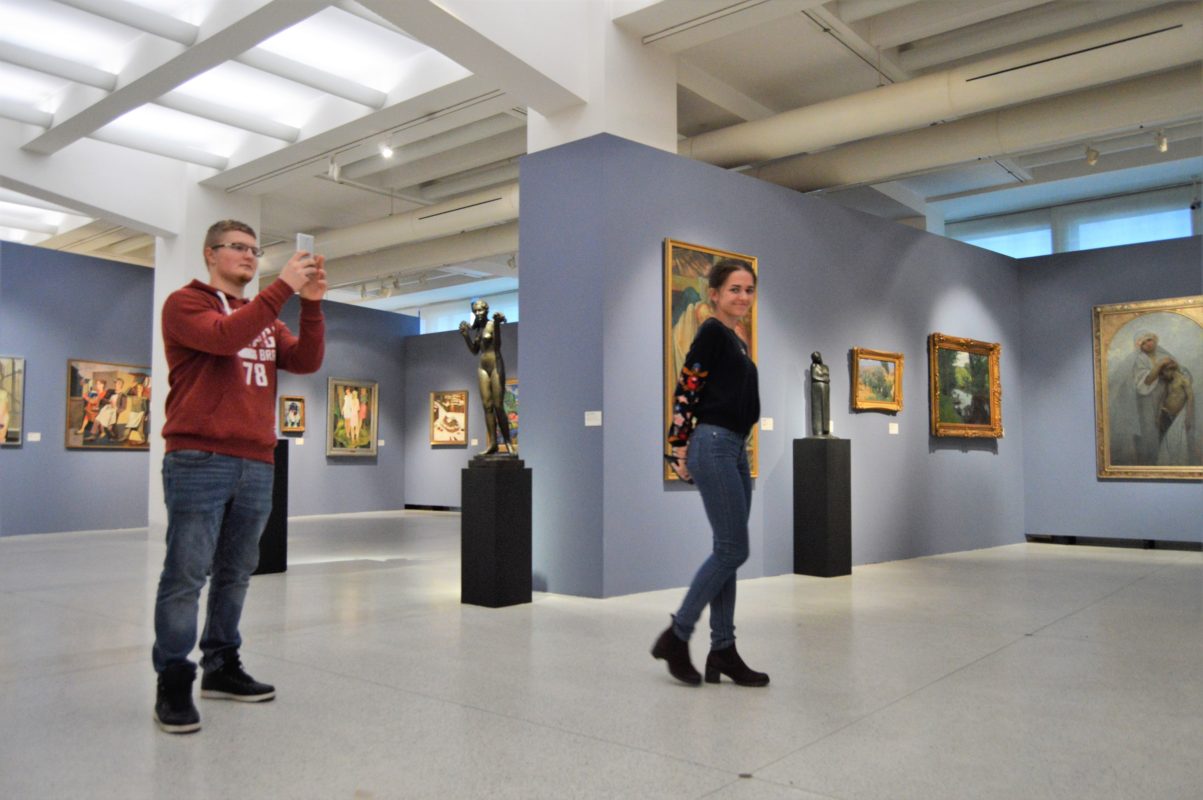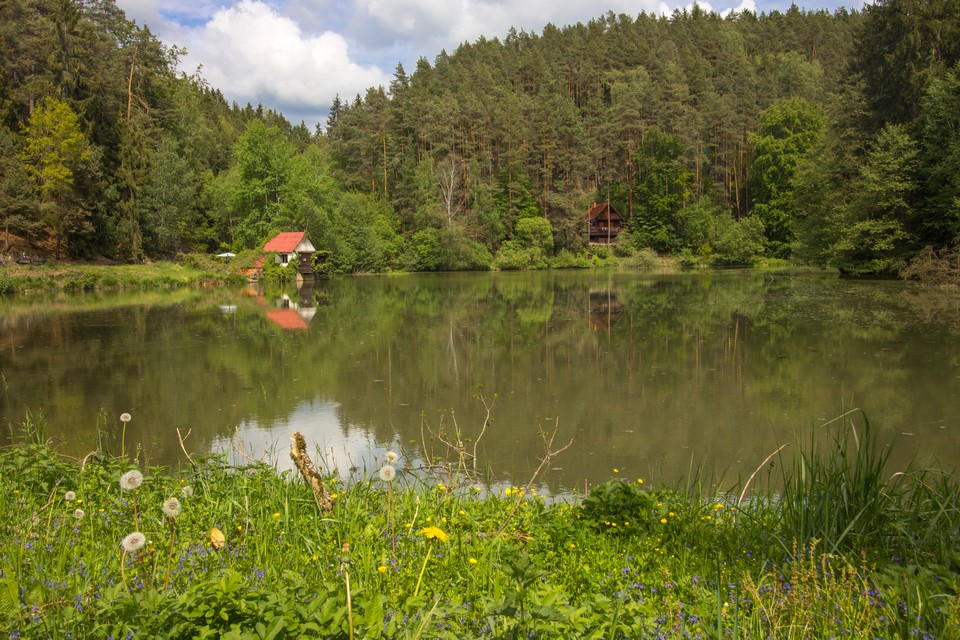Czech art is the visual and plastic arts that have been created in the present day the Czech Republic and the various states that occupied the Czech Lands in the preceding centuries. The Czech Lands have produced artists that have gained recognition throughout the entire world, including Alfons Mucha, widely regarded as one of the key exponents of the Art Nouveau style, and František Kupka, a pioneer of abstract art.
Romanesque art played an important role in the culture of the Czech lands from the year 1100 up to the start of the 13th century.
A well-preserved example of the embossed Romanesque sculpture is the appearance of the windows of the palace in Olomouc, which is probably the work of Italian stonemasons. The triptych of St. George’s cloister on the grounds of Prague Castle with the figures of Přemysl I and the abbess Agnes (Anežka) is also very attractive.
Emperor and the Bohemian king Charles IV stood at the head of an extensive super-state encompassing what is today Germany, Austria, Switzerland and the Benelux countries. Charles IV’s court painter was Master Theodoricus, who was given the task of decorating the Chapel of the Holy Cross (kaple sv. Kříže), the most important space of Karlštejn Castle, where the imperial crown jewels, valuable state documents and precious relics of saints were originally meant to be stored.
One of the greatest Baroque masters was Petr Brandl (1668-1735), the author of many large altar pictures. All the characters in his biblical scenes are animated and are often shown in extremely emotional situations, but this is always done convincingly.
Alfons Maria Mucha 24 July 1860 – 14 July 1939), known as Alphonse Mucha, was a Czech Art Nouveau painter and decorative artist, known best for his distinct style. He produced many paintings, illustrations, advertisements, postcards, and designs.
Franz Kafka (3 July 1883 – 3 June 1924) was a German-language novelist and a short story writer, widely regarded as one of the major figures of 20th-century literature. His work, which fuses elements of realism and the fantastic, typically features isolated protagonists faced by bizarre or surrealistic predicaments and incomprehensible social-bureaucratic powers and has been interpreted as exploring themes of alienation, existential anxiety, guilt, and absurdity. His best-known works include “Die Verwandlung” (“The Metamorphosis”), Der Process (The Trial), and Das Schloss (The Castle). Kafka was born into a middle-class, German-speaking Jewish family in Prague, the capital of the Kingdom of Bohemia, later part of the Austro-Hungarian Empire, today part of the Czech Republic.
The trajectory of Czech art over the course of the 20th Century and into the present day has mirrored its turbulent history. The fin-de-siècle saw Prague as a major city within the powerful Austro-Hungarian Empire, keen to promote the arts to its greater glory and show its artists free to travel across Europe. After years of persecution and restricted access to the outside world, Czech art is once again making an impact on an international stage, this time as a sovereign nation. Those who fought against the communist system are finally gaining the recognition they deserve.





